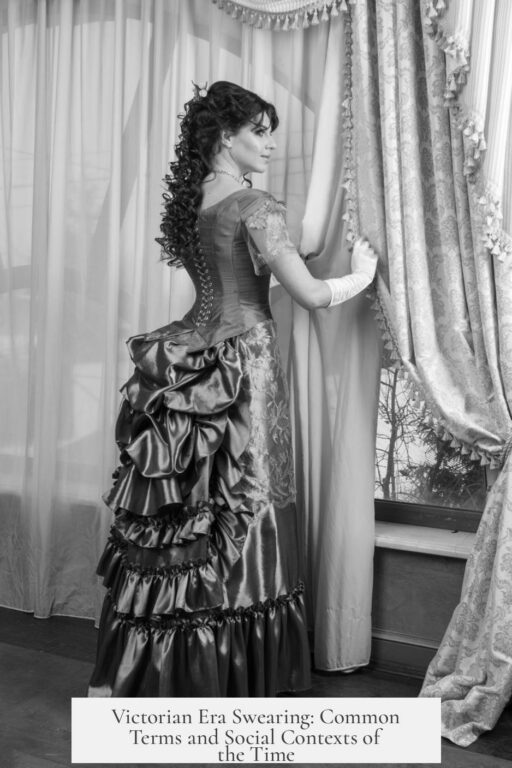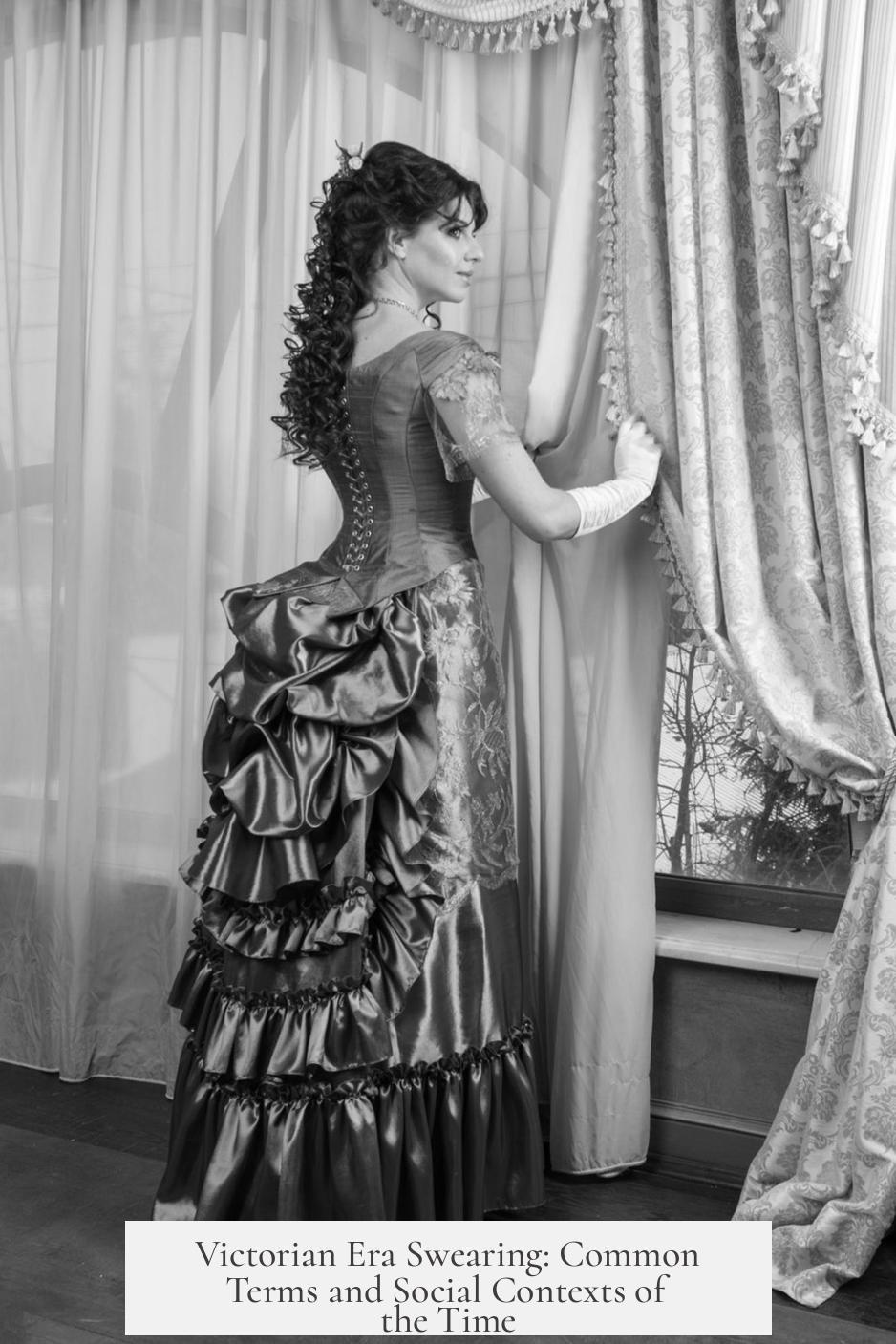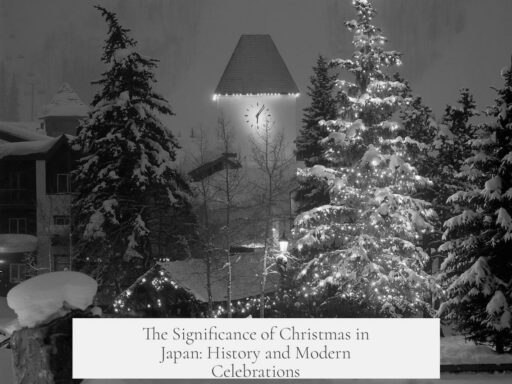People did swear in the Victorian era, but the style and acceptability of swearing depended largely on social class and context. Religious-based swearing was common, while more vulgar or scatological swearwords gained traction later in the period, especially among lower classes and the military.
In Victorian England, swearing originally centered on religious references. People commonly swore “By God,” “Damn you to Hell,” or similar blasphemous phrases. This type of language reflected the strong religious influence of the era. It was particularly common among the lower classes and in rougher environments like the military. Historical records and literature from the 18th and 19th centuries show colorful expressions such as “Damn my blood!” or “Hell and the devil confound me!” which convey this religious form of swearing.
Among the upper and middle classes, especially in polite society, overt religious swearing declined sharply. Social etiquette demanded more refined speech. Instead, minced oaths became popular as substitutes to avoid blasphemy. Expressions like “Jiminy Cricket!”, “Gee Whiskers!”, “Crikey!”, and “Gosh!” served as euphemisms for stronger religious exclamations like “Jesus Christ!”, “Christ!”, and “God!”.
By the late 19th century (around 1880), a shift occurred where more vulgar or scatological swearing emerged, even among some better-off criminals. Profanity words such as “shit,” “crap,” and “fuck” started appearing more openly in certain circles, especially within the military and lower classes. An American frontier court record notes use of the f-word during the mid 1800s, although users were punished for it.
- Religious swearing was the norm for much of the Victorian era.
- Upper/middle classes used polite euphemisms to avoid blasphemy.
- Lower classes and military retained stronger, traditional swearing.
- Scatological swearwords gained some ground late in the period.
Thus, Victorian swearing was complex and varied greatly based on social factors. The era balanced strict moral codes with enduring traditions of coarse language in specific settings.
Did People Swear in the Victorian Era? What Sort of Swearwords Were Common?
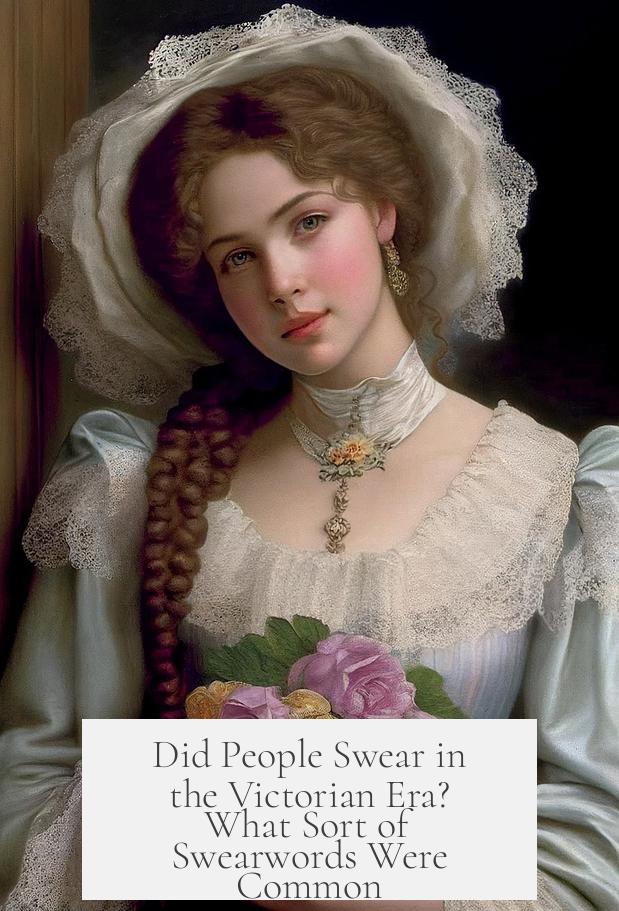
Yes, Victorians definitely swore, but the swearwords they used might surprise you. They weren’t dropping f-bombs left and right like some modern-day street corner or social media post. Instead, Victorian swearing was a complex dance of religious oaths, class distinctions, and evolving language etiquette.
So what did swearing sound like back then? Let’s unpack the Victorian era’s swearing scene, with its curious mix of prim manners and occasional salty tongue.
A Tale of Two Eras: Early vs. Late Victorian Swearing
The Victorian era stretched from 1837 to 1901, a long, stretched-out drama of social change. Early in the period, swearing was still largely tied to religious language—words like “By God!” and “Damn you to Hell!” were the usual culprits. These phrases weren’t just casual flings with foul language; they were serious oaths invoking divine authority and damnation.
Interestingly, there’s evidence that swearing like *that* was genuine and serious. Some scholars found an instance in an American frontier court in the mid-1800s where someone uttered the “f-word” aloud, getting judged very harshly for it. Picture the judge blinking in disbelief and wagging his finger, because this wasn’t just dirty talk—it was a breach of public decency. It wasn’t ubiquitous, though; this was the exception, not the rule.
But around 1880, a slow revolution happened. Vulgar language began to shift from mainly religious curses to more scatological terms. Suddenly, words like “sh@t,” “cr@p,” and “f@ck” edged their way into conversations—particularly among a “better class of criminal,” like clerks pocketing money. Even they had loud cursing episodes. This suggests the boundaries of acceptable swearing loosened somewhat as the century closed out.
Victorian Swearing and Social Classes: A Privilege of Politeness
It’s tempting to lump all Victorian English speakers under one polite umbrella. Bad idea. Social class deeply influenced who swore, how, and how often. The upper and middle classes, particularly polite society, treated swearing like a social faux pas to be avoided or cleverly disguised.
Instead of blunt phrases like “Jesus Christ!” or “God!” used as curses, polite Victorians preferred minced oaths—creative, less offensive substitutions replacing religious blasphemy. Ever heard a Victorian say “Jiminy Cricket!” or “Gee Whiskers!”? Those are prime examples. “Crikey!” and “Gosh!” also served as socially acceptable alternatives.
This allowed polite society to maintain their moral image without entirely losing the exclamatory punch we humans seem biologically wired to need when surprised or frustrated. Clever, right?
Meanwhile, the lower classes and military had a different vocabulary and set of habits. They kept swearing robustly, much like their eighteenth-century predecessors, full of fire and flourish. Plays and novels from that previous century brimmed with phrases such as:
- “Damn my blood!”
- “Hell and the devil confound me!”
- “By hell!”
- “Damn that son of a bitch!”
This colorful language was less restrained—more expressive and raw. The military, in particular, preserved these blunt swearing habits, probably because nothing says morale booster like a hearty curse shouted across the barracks.
Blasphemy Was the Norm
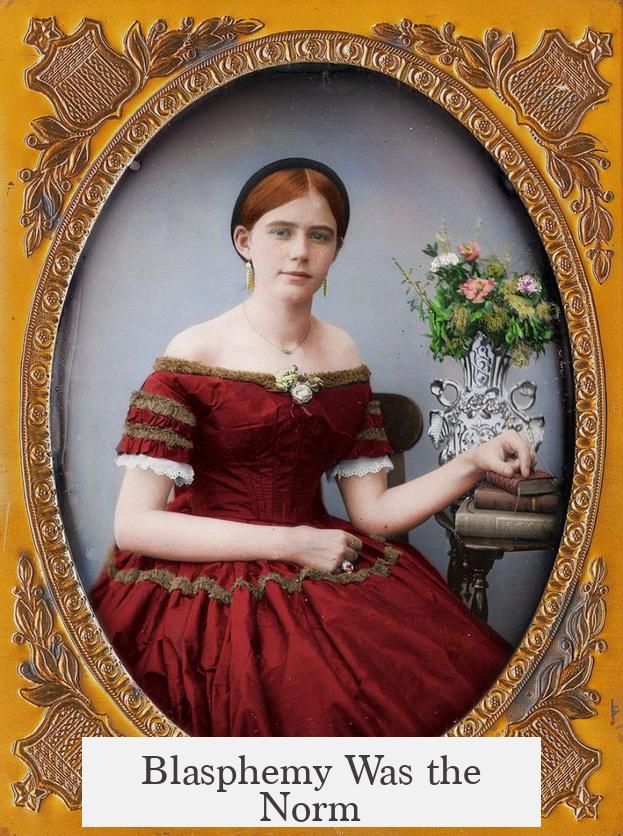
Digging deeper, it appears that religious swearing—blasphemy—was indeed the *norm* in Victorian cursing. The rapid rise of religious morality during the era paradoxically meant that people often swore by religious phrases, even though these were technically offensive to pious folks.
By the mid-Victorian period, “swearing” meant literally uttering oaths like “By God!” or “Damn you!” as expressions of anger or emphasis. This was much more common than scatological or sexual curses early on. Thus, one should not think that Victorians were prudish about all swearing; they were deeply serious about keeping blasphemy at bay in polite circles but freely wielded it in more rough-and-ready environments.
So Why Does This Matter Today?
Victorian swearing habits tell us a lot about social norms, language evolution, and human nature. For instance:
- They highlight the ever-shifting boundaries of what society tolerates as “bad language.”
- They remind us that even eras known for strict morals had plenty of colorful language hiding just beneath the surface.
- They show how social class can shape not just what language is permissible, but how people express themselves emotionally through words.
Ever wondered why some Victorian literature hints at a sudden “curse word” but you can’t quite find it spelled out? Authors had to dance around the strict norms of polite speech, inventing minced oaths or euphemisms that readers instantly understood without offending Victorian sensibilities.
Practical Takeaway: Respect the Context
Next time you’re tempted to judge a historical figure for their “lack of colorful language,” remember the context. What’s shocking or vulgar today might have been shocking or vulgar then—but in very different ways. The Victorians show us that language adapts to social forces and that swearing is a reflection of culture, not just crude expression.
If you’re a writer or historian, pay close attention to class and time when depicting Victorian characters cursing. The well-to-do might raise a polite “Gosh!” while a dockworker might drop a fierce “Damn that son of a bitch!” without blinking.
And if you’re just here for curious facts, isn’t it wonderful to discover that “Jiminy Cricket!” once served as a Victorian swear replacement? Next time you stub your toe, try that—it might be just the sort of polite but expressive exclamation Queen Victoria herself might have approved of.
